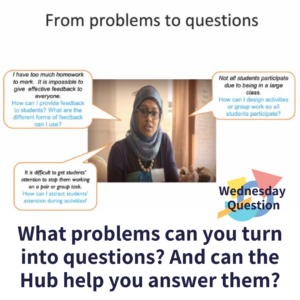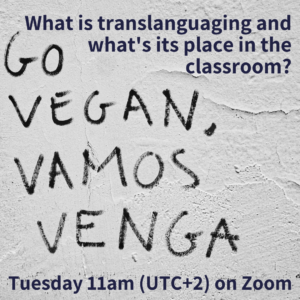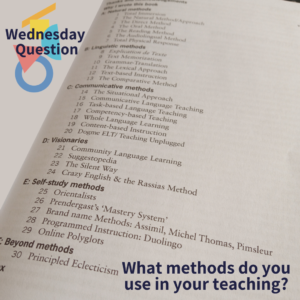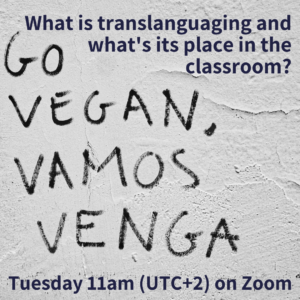Benefits of translanguaging
For example, we suggested that brainstorming could be done in any language as it allows learners to give more ideas at the initial stage of a task. By restricting learners to using just L2, we may be limiting the amount of emergent language which comes out. Translanguaging also allows learners to show what they know without a linguistic barrier, which can be very motivating.
We also considered that learners could reflect on how they completed a task afterwards: what did you use L1 for and why? Efficiency? A lack of linguistic knowledge? Was it something as simple as a mispronounced word which your peers didn’t understand so you resorted to using L1 to say it? We suggested that this reflective stage could be carried out with different people than those you worked with in the initial activity to allow you to pool resources and perhaps fill in the gaps if there was a linguistic need.
Another suggestion was that we could provide learners with more independence by having them reflect on L1 use for linguistic gaps and finding the missing structures or words themselves, either in the class or for homework.
We can raise learners’ awareness of their own abilities in this way and give them more agency, putting a positive spin on ‘what couldn’t you say in English?’ by asking ‘what do you want/need to learn?’
What’s its place in the classroom?
There was some chat about whether it should be explicit or passive – we considered the fact that when learners go into breakout rooms in the online classroom, they may well be using L1 until the teacher shows up. However, if they are completing the task and the final product is correct, should it matter how they got there? This led on to the question of whether we should explicitly tell them to do something in L1 (which then stops being translanguaging as such).
We also thought about the different stages in a lesson where translanguaging can occur: in the input, process, product or at a more personal level, in how learners take notes.
We talked briefly about the positive effect that translanguaging could have on learners who aren’t bilingual but who are learning in a bilingual system. Those who speak both languages, and perhaps even more so those whose parents speak both languages, are at an advantage to those who only speak one language if certain content is only given in one language.
Another question was why it seems to be ‘a thing’ now! We talked very briefly about how L1 use has become more acceptable in the ELT classroom, and mentioned Guy Cook and Philip Kerr. Here are a couple of open-source references:
And also how it could be included on pre-service courses – within a five-week course there are significant constraints – but judicious use of L1 could be mentioned.
Another quick thought to add here was to make plurilingualism a part of the school culture – having posters of phrases in a variety of different languages, being a ‘language-friendly’ school and normalising the fact that people use different languages.















